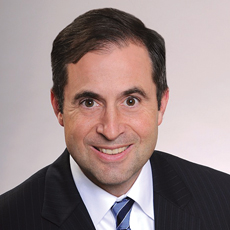
In December 2013, the Centers for Medicare & Medicaid Shared Services announced that doctors, hospitals, and other healthcare providers had formed 123 new Medicare Shared Savings Program Accountable Care Organizations. Those new ACOs would provide care to “approximately 1.5 million more Medicare beneficiaries.” The 123 new ACOs brought the total number of public and private ACOs to 606.
This summer brought a new round of registration, and the number of ACOs will increase.
The seeds that have flowered into the burgeoning of ACOs – groups of providers accepting the responsibility, and risk, for caring for the health of a designated patient population according to defined quality benchmarks (CMS measures quality of care using 33 measures in four key domains) – was planted long ago, in the baby boom. Today, that aging population is developing the expensive-to-treat chronic conditions that drive rising costs. Without bending that curve, CMS has estimated that healthcare costs will reach 20 percent of gross domestic product in 20 years. Some estimates run higher.
Responding to this crisis, the 2010 Affordable Care Act has accelerated the move from traditional fee-for-service reimbursement to pay-for-performance, or fee-for-value models, such as ACOs, shifting risk from payers to physicians, hospitals, and other providers. To succeed in this environment, not only do payers and providers need to collaborate, assuming elements of each other’s traditional roles, but physicians need to acquire certain capabilities, key among them the ability to measure costs and quality while standardizing financial reporting.
Today, many physicians and hospitals simply don’t know (and have limited ability to find out) how long patients are waiting in their offices and emergency rooms. They don’t know how many patients they are treating within a given timeframe. The metrics they do have are focused narrowly on revenue, necessary for fee-for-service but not that much help in a fee-for-value environment. At the same time, their healthcare technology often is a hodge-podge of point solutions. To provide the quality and cost measurements required for pay-for-performance, and for participation in ACOs, these solutions must be integrated and placed on a single platform accessible for analytics. Dashboards should be installed to track quality, safety, and performance metrics such as revenue per available bed per day, cost per discharge, and so on. Outcomes must be tracked, gaps in care identified.
Innovating organizations focus on eliminating wasteful and unproductive variations in both clinical and administrative processes. Reducing variation almost always improves quality while lowering costs.
Reducing variation also applies to financial reporting. It needs to be rolled up across departments so that organizations can more accurately assess their costs and discover new revenue opportunities. To ready themselves for the ACO reimbursement model, organizations – whether hospitals or independent physician practices – need to have a unified view of their finances, a single version of the truth.
For example, Tennessee-based Summit Health Solutions, an MSSP ACO with 36,000 Medicare patients is developing a process to aggregate paid claims data. And it’s hiring a health economics specialist to complement its data analysis capabilities. With these resources, Summit is reaching out to local employers (and also commercial payers) interested in value-based arrangements.
Just like the aging of the baby boomers, the transformation of the U.S. healthcare industry is inevitable and already underway. By embracing the tools and processes that will allow them to master data, health care players can embrace the change and prepare for success.
Mark Fish is a Managing Director at FTI Consulting in the Health Solutions practice. Mr. Fish has more than 24 years of healthcare industry experience and has served in various leadership positions in finance, contracting, strategy, analytics, actuarial and risk management.



